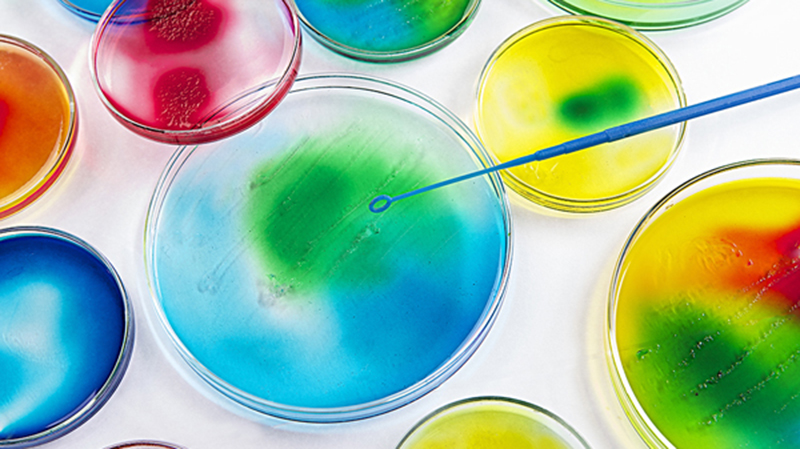Natural pigments have the characteristics of safety, non-toxicity, non-carcinogenicity and biodegradation. Microorganisms are widely distributed and have a great variety. Therefore, microbial dyeing has broad application prospect in textile industry.
1.Microbial pigment
Microbial pigment is a secondary metabolite of microorganisms, which has many colors, as red, orange, yellow, green, cyan, purple, black and brown, etc. Microbial pigments can be divided into two types, as water-soluble pigments and non-water-soluble pigments. Comparing with other natural dyes, microbial dyes have short production period and lower cost, which is easier for industrialized production.
There are two main ways to produce microbial pigments, as secretions from the growth of microorganisms and the pigments produced by the conversion of one component of the culture medium as a substrate. For the second one, it needs to add some substances needed for pigment production in the culture medium to promote pigment production and increase pigment yield.
2.Methods of microbial dyeing
Extract Dyeing
It is to use liquid medium to culture microorganisms to make them produce many pigments, and then obtain the pigment solution by separation, extraction and concentration.
The pigment solution can be directly used as dye liquor, but also can be made into pigment powder and then used. Extract dyeing has wide application range and is easy to industrialize. But it has complicated extracting process, which has high cost.
Bacterial Cell Dyeing
Bacterial cell dyeing is divided into two ways depending on the culture medium. One is liquid fermentation medium. When microorganisms metabolize large amounts of pigments, the sterile fabric can be put into the culture solution to have culture dyeing. The other is solid agar medium. After a period of cultivation, when the microorganisms metabolize large amounts of pigments, the bacterial cells and medium is added water and boiled, and the fabric is dyed at 80℃.
Bacterial cell dyeing is simple, which saves time and energy and easy to handle. But it is not suitable for microorganisms that produce insoluble pigments.
Microbial natural dyes are eco-friendly and have mature fermentation technology and good biocompatibility. They become more and more popular among people. Textiles dyed by microbial dyes have unique colors and luster. Microbial natural dyes have great application prospects.
Post time: Mar-08-2024


